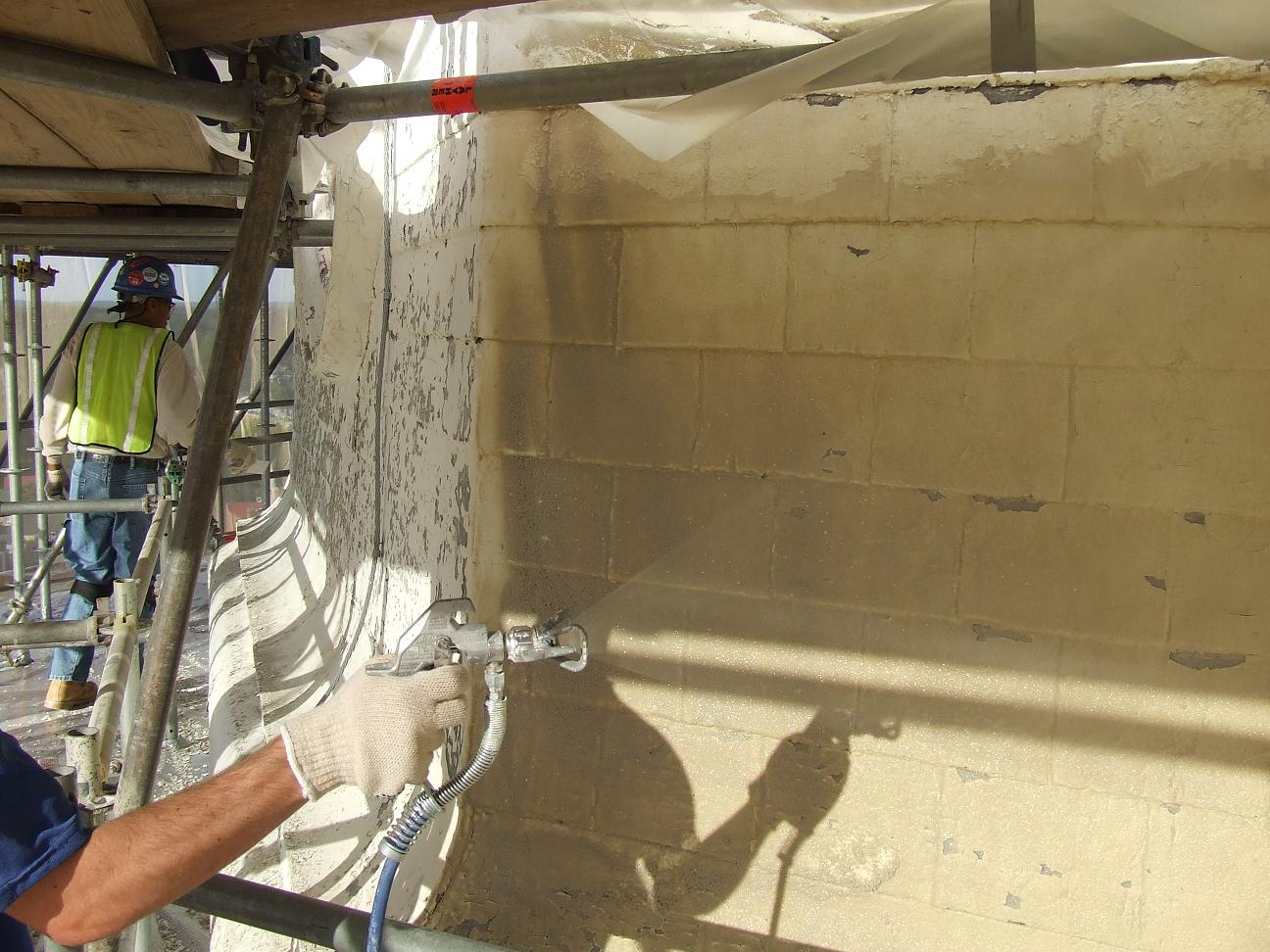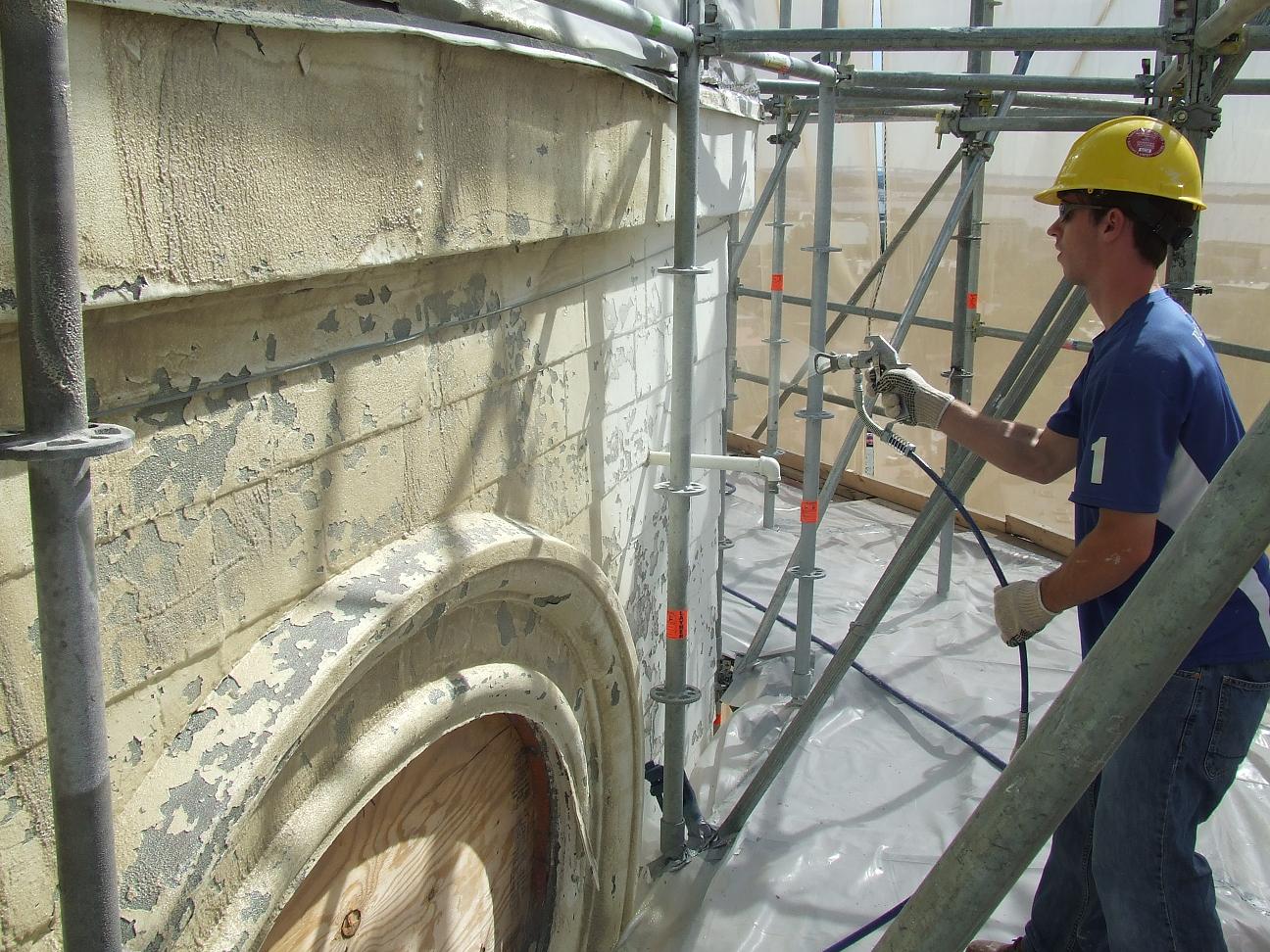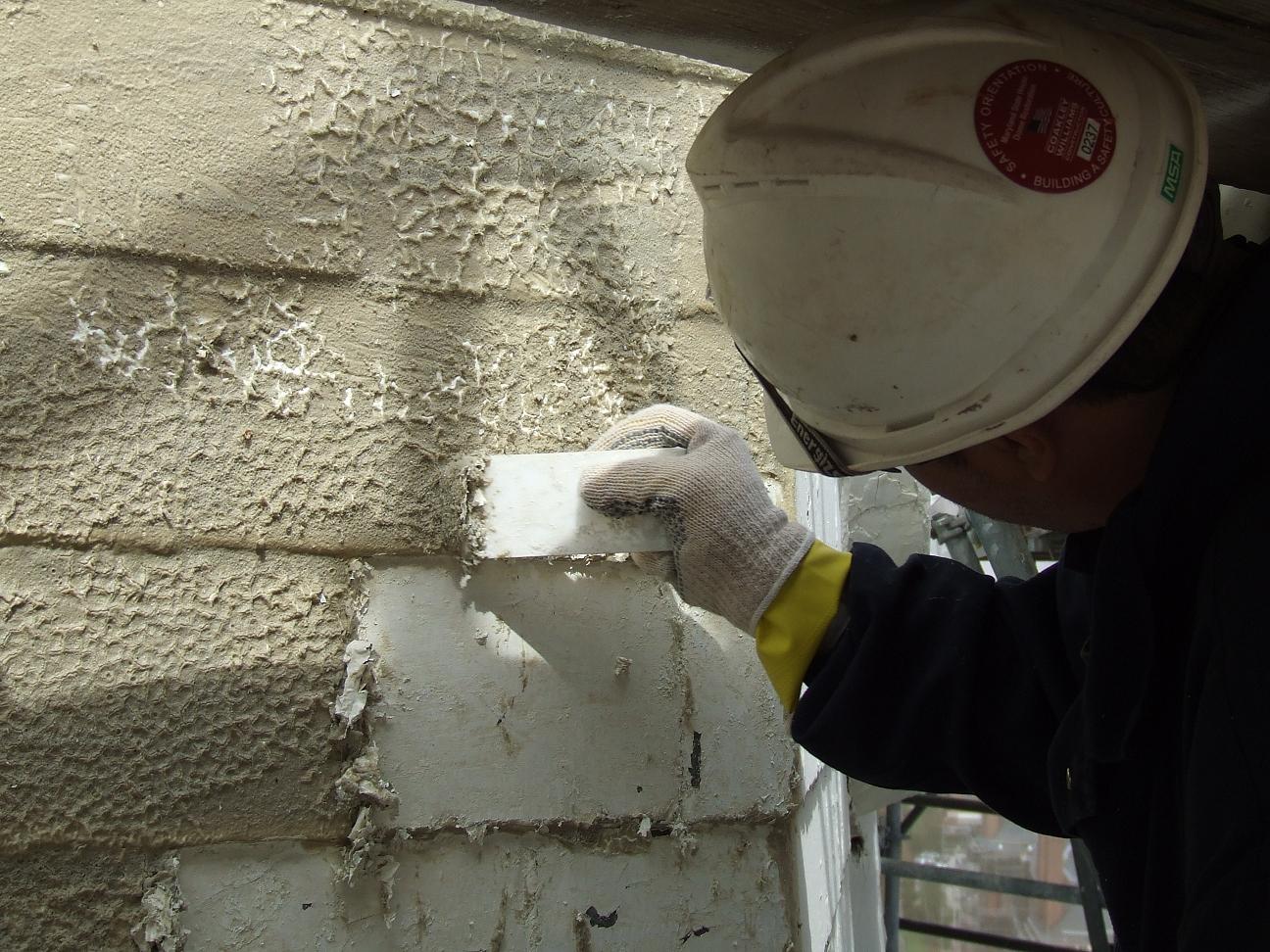Do You Have A Restoration Project We Can Help With?
Annapolis, Maryland
State House’s historic dome reveals secrets during restoration
Restoring and repainting the Annapolis landmark is a lesson in reading — and preserving — the past
August 19, 2011 | By Jonathan Pitts, The Baltimore Sun
It’s brilliant and blustery atop the tallest building in Annapolis, a bank of white clouds scudding quickly across the sky. John Greenwalt Lee leans against a temporary railing, gazing down with fondness on the town he calls home.
A few blocks to the northeast, the dome of the Naval Academy Chapel looms far above the street. Lee helped renovate it in 1999, rappelling out a window to apply chemicals to the copper to bring out its historic-looking green.
A little to the west, the spire of St. Anne’s Episcopal Church towers above downtown. Lee helped with a structural survey of the building.
In a way, those jobs were just steppingstones to the architectural conservator’s current venture: helping restore the wooden dome that has adorned the Maryland State House since 1789.
“I’ve been working my way up,” he says, laughing. “Who wouldn’t want to work on the State House? It doesn’t get any more historic than this.”
Since May, Lee, 61, has been lead consultant to a team of professionals who are removing failing paint, restoring original windows and planning to leave the dome with the sort of protective coat that will keep it safe from the ravages of weather for years to come.
The Maryland Historical Trust and the Maryland Department of General Services are carrying out the $787,000 project, which is slated to last through October.
Project Details
DATE
August 19th, 2011
CLIENT
The Maryland Historical Trust and the Maryland Department of General Services
PROJECT TYPE
Commercial
CONTRACTOR
Coakley Williams Inc. of Gaithersburg
Talk with Lee or his partners, and you’ll learn that the paint issues alone reflect a problem that dogs nearly every similar project: Modern materials are often the wrong ones to use when restoring old buildings.
But to Lee, the job is also an opportunity — a chance to scrutinize the past and figure out what people were doing right at the time.
“Buildings are like books,” he says, a stiff wind flapping his shirt on a platform about 200 feet above the traffic on State Circle. “They tell us everything we need to know about them, as long as we read them properly. This has been a project of surprises.”
Base level
It’s late on an August morning when Lee and Sam Cook, a mustachioed man with a limp left over from his college football days, greet a visitor at the foot of the scaffolding, ready to offer a tour.
Cook, the Annapolis regional director for the DGS, brims with thoughts about the job he has been helping supervise for four months.
e scaffolding alone took the general contractor, Coakley Williams Inc. of Gaithersburg, a month to design and build, Cook says, bounding up the first few steps.
“It’s the finest scaffolding job I’ve ever seen,” Lee agrees.
And they’re on their way up to the dome’s lowest level: a white, eight-sided drum that measures 40 feet high and 40 feet in diameter and features one arch-topped window in the center of each side.
We’ve always known plenty about the State House itself. Builders started work on it in 1772 and finished it about 10 years later. It served as the nation’s capital between 1783 and 1784, and the Continental Congress ratified the Treaty of Paris there in 1784, ending the Revolutionary War.
Shortly after that, a local builder, Joseph Clark, was hired to add some grandeur. He devised a unique wooden dome that would tower 121 feet above the State House roof. He finished the exterior in 1788, and it has dominated the Annapolis skyline ever since.
As the decades passed and sun, snow, rain and wind battered his creation, those charged with maintaining the dome repainted it numerous times. But climbing its steep vertical sides was so cumbersome that few had a chance to study its structure.
Starting four or five years ago, that changed.
Officials of Cook’s DGS, which takes care of the building, had long since seen paint peeling off the structure — a problem that could expose the structure to significant damage. In 2007, they dispatched Lee to climb the dome’s first tier and take samples.
In many ways, what he found astonished him.
Modern historians knew that Clark had built the dome’s exterior out of old-growth cypress, one of the world’s most water-resistant woods. But they never imagined that nearly every cypress shingle in the building dated back to its origin — almost none had ever been replaced.
“Several layers of paint were failing, but the materials and craftsmanship of the building were remarkable,” Lee says.
There was more. When he pulled a shingle loose, the conservator noticed it was held in place by handmade nails — a sort not made after the year 1800. “The joinery [in the structure] was wood, but all the hardware had been made by blacksmiths,” he says.
And the frames surrounding the arch-topped windows? They had suffered virtually no damage in more than two centuries. The original builders, Lee saw, had made the flashing atop the frames out of iron, then coated it with red tin oxide, a material once used to seal the bottoms of boats.
“You can’t get the stuff anymore, of course,” he says. “It works too well.”
Moisture, the enemy of wood, had almost no chance to seep in. The drum — a layer that reaches a third of the way to the cupola — was as tight as a ship’s hull, he thought. And strangely enough, it was probably patterned after one.
Surface knowledge
The quality of the craftsmanship came as no jolt to Lee. He’d long since concluded that America’s best building occurred during the 18th and 19th centuries, when skilled immigrant labor was plentiful, builders still used materials found within a few miles of a site, and their work reflected the ingenuity and mores of the community.
But what about the paint? Lee and Cook step up to a wall, pointing to a dusty white surface where it’s flaking off and cracked in a weblike pattern.
“Ever see that spot on your car where the paint is failing? They call it ‘spidering.’ You have the same thing here,” Cook says.
Buildings are packed with information, Lee often says. Luckily for him, he adds, our capacity to extract that information has grown significantly over the past couple of decades, and that helps conservators decide how to do their work.
He points to a tiny hole where he removed a paint sample months ago. Lee took the plug to a laboratory and analyzed it via ultraviolet fluorescent microscopy, a technique long associated with fine art conservation. He proved, among other things, that the dome has been painted 23 times, that the first 19 layers (all done in oil-based paint) had held, and that the four outermost layers (all done in latex) were the ones falling away.
“We come along and develop a new technology, and we assume it’s the best for any situation,” Cook says. “Someone applied the latex thinking it would be durable. But the latex is failing. In some places it’s harming the oil-based paints below it.”
The finding has helped conservators develop a strategy for the entire dome. They’ll use gentle paint-removal techniques, stripping down only to stable oil-based layers, not to the wood. Then they’ll use a new oil-based paint for their outer coats.
Heading up
The wind grows stronger as Lee and Cook make their way up the building. Each new level holds a surprise or two, as if the climb were an archaeological dig in reverse.
The next tier up, generally known as the bell, stands another 40 feet high. Its lower half, painted white, is vertical in appearance. From that point up, it’s gray slate — one of the world’s most ancient and durable building materials — that curves inward toward the cupola in the sky.
Since paint concealed it, no one knew for sure what the bell’s lower half was made of, Lee says. He and others had a theory it, too, might be slate. Closer inspection proved them right.
Marylanders are likely more familiar with the next three levels. Like the upper layers of a wedding cake, the lantern deck, cupola and acorn, as they’re known, create an upwardly-tapering silhouette that’s visible miles away.
The lantern deck is a something like an eight-sided booth, 12 feet high. A walkway surrounds it, girded by an elaborate balustrade. That’s where Bartolo Venturi says hello. He’s the supervisor of seven men — employees of PCS Construction of Springfield, Va. — who are hard at work removing paint.
They’re softening the latex layers with a citrus-based solution, then using plastic tools Lee designed for this job to scrape it away.
“These help pull off the latex without damaging the paint and wood underneath,” Venturi says, the brilliant early afternoon sun gleaming off his hard hat.
He doesn’t fear heights, he adds — a good thing, since the drop from here is vertiginous — and even though the work itself isn’t much different from what Venturi normally does, he’s says he’s enjoying the process of working on one of America’s most historic buildings.
They feel the same way one flight up. Brice Colhoun, a carpenter who owns an independent company called Cumberstone Craftsmen, is descended from a line of Annapolis craftsmen dating back 300 years. “My family built a lot of those buildings,” he says, pointing to the town far below.
He and two colleagues are removing windows from the cupola, an even smaller booth-like structure, for off-site repair. He seems impressed that the wood itself is mostly intact — a miracle, he says, for such a material at this altitude in the coastal Mid-Atlantic.
He calls a job like this a once-in-a-lifetime opportunity, and a co-worker, Cory Gassman, couldn’t agree more. “We all live in Annapolis,” he says. “We see [the dome] every day. It’s a pride thing, you know? We want it to last.
“Hey, want to go up top? You’ve never seen Annapolis like this. Bring your camera.”
The acorn and the rod
Indeed, from the highest platform of all, it’s hard to know what to focus on.
First there’s the view — North, East, West and Francis streets radiating outward from below; row upon row of avenues, rooftops and buildings; the broad Chesapeake gleaming in the distance.
Then there are the finishing touches on the building: a giant, upright vertical acorn and a wrought-iron lightning rod that extends upward through its center, 28 feet into the sky.
Both are glimpses into history. The lightning rod was probably the first of the kind designed by Benjamin Franklin to have been used on a public building, and in the parlance of the late 18th century, “sound as an acorn” meant free of imperfections.
The gilt-covered figure, which replaced the original in 1997 during a previous restoration, will soon be getting another coat of gold leaf.
Has the project itself been without flaws? Not quite, if you ask Lee. He lauds every workman for his craftsmanship but wonders whether, in this case, the present will fully capture the past.
For years, it turns out, the Maryland State Archive has owned a 1789 watercolor by Charles Willson Peale, a famed portraitist in his day. It shows the State House dome in a way no modern Annapolitan has seen it, painted not in white but in a series of colors — gold for the drum level, gray and peach for the bell, then gold alternating with peach, tier by tier, the rest of the way up.
Few seem to have given the work much thought until Lee, doing tests for this project, found gold and gray pigment in the base layers of several samples. It convinced him and others that the Peale rendition was accurate — and that white was only added later, probably in the 1830s.
As word of the finding spread, a groundswell of opinion developed that when the dome is repainted, it should be in the Peale hues. A number of Annapolitans wrote to local newspapers to that effect. The debate worked its way to the highest levels of state government before Maryland Historical Trust officials opted for the color most see as “traditional” — white.
Painting starts in about three weeks.
The city’s highest point is a good one for perspective. The decision doesn’t so much bother Lee as give him a chance to ponder, once again, the nature of the work he loves. If a building is like a book, the State House dome has been “an extraordinary document” to page through, he says, and not everyone’s going to read it the same way.
Get A Quote Today
To have an American Building Restoration Products, Inc. representative contact you please complete the form below.
If you would prefer to call, American Building Restoration Products, Inc. customer service representatives are available Monday through Friday, 8 a.m. to 4 p.m., Central Time, at 800-346-7532




